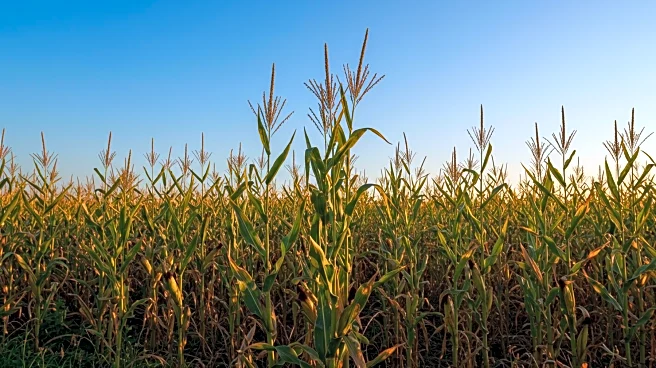What is the story about?
What's Happening?
The United States Department of Agriculture (USDA) has released its first crop-production forecast of the year, indicating record production and yield for Nebraska's corn and soybean crops. According to the USDA, corn production is expected to increase by 13% year-over-year, potentially reaching 16.7 billion bushels, which would set a new record. The forecast also projects record corn yields at nearly 189 bushels per acre. Despite a decrease in soybean production forecasts by 2% from August of last year, soybean yields are anticipated to set a record at 53.6 bushels per acre.
Why It's Important?
The forecasted increase in corn and soybean yields is significant for Nebraska's agricultural sector, which plays a crucial role in the state's economy. Higher yields can lead to increased revenue for farmers and contribute to the overall economic growth of the region. Additionally, record production levels may impact national agricultural markets, potentially influencing commodity prices and trade dynamics. The anticipated yields also reflect advancements in farming techniques and technology, which could serve as a model for other agricultural regions.
What's Next?
Farmers and agricultural stakeholders in Nebraska will continue to monitor weather conditions and other factors that could affect the final harvest outcomes. The USDA's forecasts may prompt adjustments in market strategies and pricing models as stakeholders prepare for the potential record yields. Additionally, policymakers and industry leaders might explore opportunities to leverage these forecasts for economic development initiatives and support for the agricultural community.
Beyond the Headlines
The record yields forecasted by the USDA highlight the importance of sustainable farming practices and technological innovations in agriculture. As climate change and environmental concerns continue to impact farming, these advancements could play a critical role in ensuring food security and economic stability. The focus on yield improvements also underscores the need for ongoing research and investment in agricultural technology.
AI Generated Content
Do you find this article useful?















